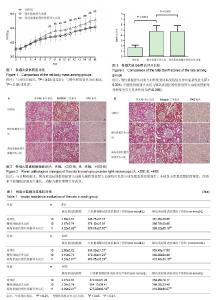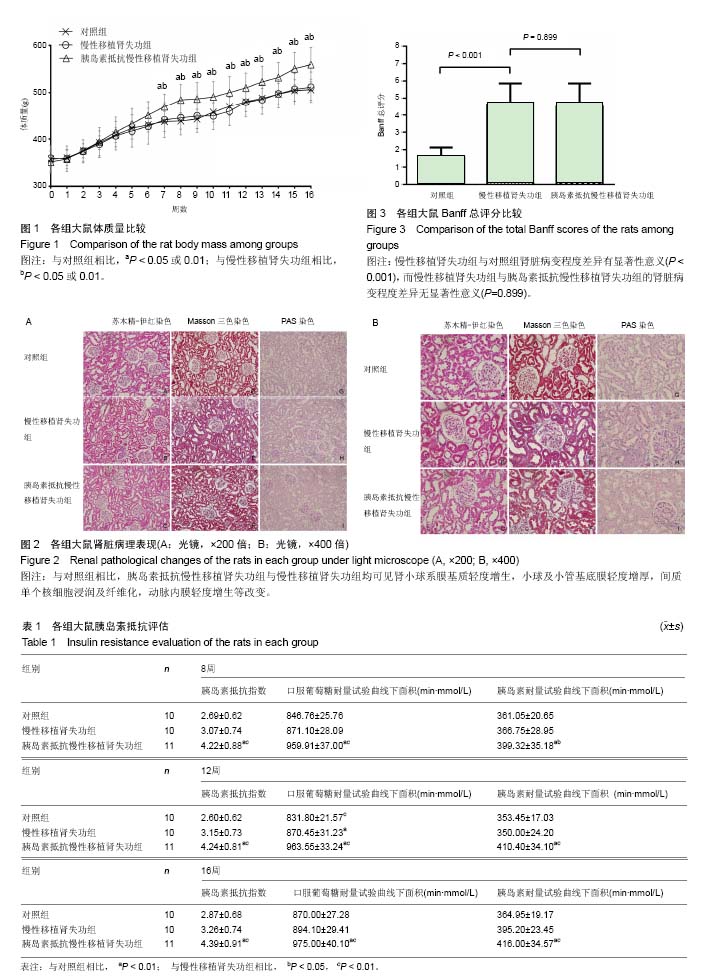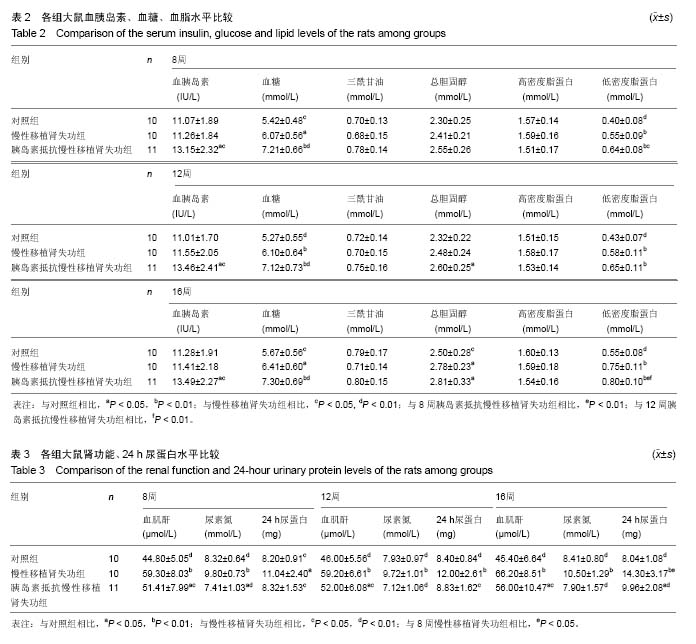| [1] Cecka JM. The UNOS Renal Transplant Registry. Clin Transpl. 2002:1-20.[2] Starzl TE, Klintmalm GB, Weil RR, et al. Cyclosporin A and steroid therapy in sixty-six cadaver kidney recipients. Surg Gynecol Obstet. 1981;153(4):486-494.[3] Waller JR, Nicholson ML. Molecular mechanisms of renal allograft fibrosis. Br J Surg. 2001;88(11):1429-1441.[4] Wang JH, Skeans MA, Israni AK. Current Status of Kidney Transplant Outcomes: Dying to Survive. Adv Chronic Kidney Dis. 2016;23(5):281-286.[5] Matas AJ, Gillingham KJ, Sutherland DE. Half-life and risk factors for kidney transplant outcome--importance of death with function. Transplantation. 1993;55(4):757-761.[6] Fadili W, Habib AM, Laouad I. Chronic renal allograft dysfunction: risk factors, immunology and prevention. Arab J Nephrol Transplant. 2013;6(1):45-50.[7] Safinia N, Afzali B, Atalar K, et al. T-cell alloimmunity and chronic allograft dysfunction. Kidney Int Suppl. 2010;(119): S2-S12.[8] Seron D, Burgos D, Alonso A. Histology and proteinuria after renal transplantation. Transplant Rev (Orlando). 2012;26(1): 20-26.[9] Solez K, Colvin RB, Racusen LC, et al. Banff '05 Meeting Report: differential diagnosis of chronic allograft injury and elimination of chronic allograft nephropathy ('CAN'). Am J Transplant. 2007;7(3):518-526.[10] Stegall MD, Park WD, Larson TS, et al. The histology of solitary renal allografts at 1 and 5 years after transplantation. Am J Transplant. 2011;11(4):698-707.[11] O'Connell PJ, Zhang W, Menon MC, et al. Biopsy transcriptome expression profiling to identify kidney transplants at risk of chronic injury: a multicentre, prospective study. Lancet. 2016;388(10048):983-993.[12] Gourishankar S, Leduc R, Connett J, et al. Pathological and clinical characterization of the 'troubled transplant': data from the DeKAF study. Am J Transplant. 2010;10(2):324-330.[13] 陈怀周,朱有华,眭维国,等.肾移植术后代谢综合征发病率及其危险因素临床研究[J].国际泌尿系统杂志,2008,28(3):293-296.[14] de Vries AP, Bakker SJ, van Son WJ, et al. Metabolic syndrome is associated with impaired long-term renal allograft function; not all component criteria contribute equally. Am J Transplant. 2004;4(10):1675-1683.[15] Pedrollo EF, Correa C, Nicoletto BB, et al. Effects of metabolic syndrome on kidney transplantation outcomes: a systematic review and meta-analysis.Transpl Int. 2016;29(10): 1059-1066.[16] Porrini E, Delgado P, Bigo C, et al. Impact of metabolic syndrome on graft function and survival after cadaveric renal transplantation. Am J Kidney Dis. 2006;48(1):134-142.[17] de Vries AP, Bakker SJ, van Son WJ, et al. Insulin resistance as putative cause of chronic renal transplant dysfunction. Am J Kidney Dis. 2003;41(4):859-867.[18] Shrestha B, Haylor J. Experimental rat models of chronic allograft nephropathy: a review. Int J Nephrol Renovasc Dis. 2014;7:315-322.[19] 汪园园,欧斌,李苏华,等.利用高糖高脂饮食建立胰岛素抵抗大鼠模型[J].深圳中西医结合杂志,2011,21(1):12-14,18.[20] 陈霞,岳枫,靳冉,等.高脂饲料诱导不同品系大鼠胰岛素抵抗模型的比较研究[J].山西中医学院学报,2013,14(4):9-12.[21] Rajamani U, Joseph D, Roux S, et al. The hexosamine biosynthetic pathway can mediate myocardial apoptosis in a rat model of diet-induced insulin resistance[J]. Acta Physiol (Oxf). 2011;202(2):151-157.[22] Fujimoto S, Mochizuki K, Shimada M, et al. Insulin resistance induced by a high-fat diet is associated with the induction of genes related to leukocyte activation in rat peripheral leukocytes. Life Sci. 2010;87(23-26):679-685.[23] Racusen LC, Solez K, Colvin RB, et al. The Banff 97 working classification of renal allograft pathology. Kidney Int. 1999; 55(2):713-723.[24] 黎磊石,刘志红.中国肾脏病学[M].北京:人民军医出版社,2008: 1777-1779,1782.[25] 张世卿,佟丽.胰岛素抵抗作用发生机制及实验模型的研究进展[J].中药新药与临床药理,2012,23(3):364-368.[26] 朱宏伟,施晓会,刘红,等.糖尿病动物模型研究概述[J].川北医学院学报,2014,(5):438-441.[27] 朱超,朱莹莹.Ⅱ型糖尿病动物模型的构建[J].中国实验动物学报,2013,21(2):84-88.[28] 余臣祖,张朝宁,刘国安,等.实验性2型糖尿病动物模型研究进展[J].医学综述,2006,12(1):41-42.[29] Castro AV, Kolka CM, Kim SP, et al. Obesity, insulin resistance and comorbidities? Mechanisms of association. Arq Bras Endocrinol Metabol. 2014;58(6):600-609.[30] 王紫晨,方向华,冯明,等.代谢综合征的定义及进展[J].中华老年心脑血管病杂志,2011,13(4):376-378. [31] Courivaud C, Kazory A, Simula-Faivre D, et al. Metabolic syndrome and atherosclerotic events in renal transplant recipients. Transplantation. 2007;83(12):1577-1581.[32] Alexander MP, Patel TV, Farag YM, et al. Kidney pathological changes in metabolic syndrome: a cross-sectional study. Am J Kidney Dis. 2009;53(5):751-759.[33] Sarafidis PA, Ruilope LM. Insulin resistance, hyperinsulinemia, and renal injury: mechanisms and implications. Am J Nephrol. 2006;26(3):232-244.[34] Porrini E, Delgado P, Torres A. Metabolic syndrome, insulin resistance, and chronic allograft dysfunction. Kidney Int Suppl. 2010;(119):S42-S46.[35] Porrini E, Bayes B, Diaz JM, et al. Hyperinsulinemia and hyperfiltration in renal transplantation. Transplantation. 2009; 87(2):274-279.[36] Tomaszewski M, Charchar FJ, Maric C, et al. Glomerular hyperfiltration: a new marker of metabolic risk. Kidney Int. 2007;71(8):816-821.[37] Faenza A,Fuga G,Nardo B,et al. Metabolic syndrome after kidney transplantation.Transplant Proc.2007;39(6):1843-1846.[38] Liao MT, Sung CC, Hung KC, et al. Insulin resistance in patients with chronic kidney disease. J Biomed Biotechnol. 2012;2012:691369.[39] Nashar K, Egan BM. Relationship between chronic kidney disease and metabolic syndrome: current perspectives. Diabetes Metab Syndr Obes. 2014;7:421-435.[40] Artunc F, Schleicher E, Weigert C, et al. The impact of insulin resistance on the kidney and vasculature. Nat Rev Nephrol. 2016;12(12):721-737.[41] Ponticelli C, Graziani G. Proteinuria after kidney transplantation. Transpl Int. 2012;25(9):909-917.[42] Horita S, Nakamura M, Suzuki M, et al. Selective Insulin Resistance in the Kidney. Biomed Res Int. 2016;2016: 5825170.[43] Zoja C, Benigni A, Remuzzi G. Cellular responses to protein overload: key event in renal disease progression. Curr Opin Nephrol Hypertens. 2004;13(1):31-37.[44] Wissing KM, Pipeleers L. Obesity, metabolic syndrome and diabetes mellitus after renal transplantation: prevention and treatment. Transplant Rev (Orlando). 2014;28(2):37-46.[45] Seron D, Burgos D, Alonso A. Histology and proteinuria after renal transplantation. Transplant Rev (Orlando). 2012;26(1): 20-26.[46] Nowak C, Salihovic S, Ganna A, et al. Effect of Insulin Resistance on Monounsaturated Fatty Acid Levels: A Multi-cohort Non-targeted Metabolomics and Mendelian Randomization Study. PLoS Genet. 2016;12(10):e1006379 |



